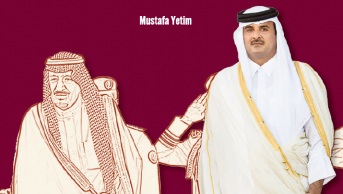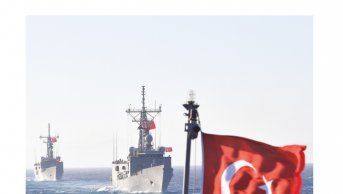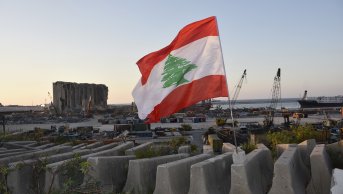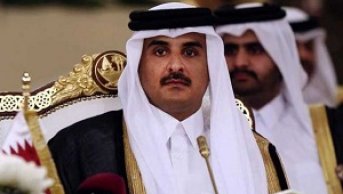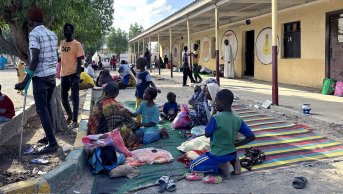“Renewed” Period in the Lebanon Politics and Michel Aoun: Chances and Impossibilities

The current state and transformation of Lebanon’s Sectarian Structure
Resembling a sectarian federation, the state structure in Lebanon is founded upon a power-sharing practice among the major sect groups (Maronites, Sunni, Shiite and Druze). The population census of 1932 held under the control of the then-colonial power France had placed the Maronites (28.8%) in the first place, the Sunnis (22.4%) in the second and the Shiites (19.6%) in the third, and had determined the power sharing as such. In accordance with the population census, the Maronites have received major official posts such as the Presidency, the Chief of the Army and a major portion of the parliament seats. The Sunnis have taken place in the government since 1937 (expect 1943 and 1952) as Prime Ministers and the Shiites as the Parliament Chairperson since 1947. Having an Orthodox Christian Defense Minister and a Druze Interior Minister, this structure forms the basis of the Lebanese state system. The Lebanese state’s dependence on the Maronite-Sunni dominance has been made official through the National Pact (Misaku’lvatani) between the Sunni leader Riyad al-Sulh and the Maronite leader Bishare al-Huri in 1943.
Over time, the increasing Shiite population and the rising power of Islamist groups in Lebanon, Beqaa and Beirut such as Hizbullah-Lebanese resistance group (Evfacu’l-mukavemeti’lLübnaniyye-emel) from the 1970s and 1980s onwards have proved to be a liability for the Lebanese state which is based on the dominance of the Sunnis and the Maronites. This vulnerability and the Lebanese Shiites’ revisionist and radical attitudes towards the state have all been made visible with the Lebanese civil war of 1975-1989, which brought the country on the verge of collapse. The Ta’if Accords of 1989, which brought an end to the civil war, has given the Christians, Shiites and Sunnis equal representation in the parliament. It has shown that the Muslims in the Lebanese society and the Shiites among the Muslims have gained power in the country.
The importance of the Ta’if Accords further magnifies when the Shiite representation and influence in the past is taken into consideration. Therefore, the Ta’if Accords benefited Muslims more in comparison to the Christians and the Shiites had gained more than the Sunnis in terms of the sectarian balance of power. Accordingly, the Shiite representation has risen to 22% (27 chairs) from 19% (19 chairs), equaling the Sunnis. And Muslims has acquired equal representation in comparison to the Christians with 64 chairs. It is actually the Doha Agreement of 2008 which has resulted in the Shiites rising in power and dominance in the Lebanese state. This agreement has granted Hizbullah, the violent Islamist group which had been radically raising its voice against the “discrimination” and “sectarianism” in the Lebanese polity, the power of “veto” against the government. The regulations of the Doha agreement, which were internalized in the constitution, stipulate that the opposition will be represented by 11 ministers (one more from one-third) in the Lebanese cabinet of 30 ministers and the government would collapse if 11 ministers resign.
Thus, the Lebanese opposition led by Hizbullah has acquired a decisive power in the Lebanese state in general and the Lebanese government in particular. The first clear instance when this decisive power was applied in the Lebanese politics was seen in 2011. Utilizing the veto power that the opposition acquired in the 2008 Doha Agreement, Hizbullah forced the resign of Prime Minister Saad Hariri son of Rafiq Hariri by leaving the government defunct after its ministers and later another opposition minister resigned from their posts. Thegovernment of Saad Hariri, who approved a UN-led investigation of the assassination of Rafiq Hariri was therefore forced to collapse and Hizbullah acquired a greater leverage over the new government formed by NajipMikati. The power and influence of Shiites in general and Hizbullah in particular over the Lebanese politics were more clearly stressed after Michel Aoun, a Maronite Christian, leader of the National Freedom Movement was elected the 13th President of Lebanon on October 31st, 2016.
Shifting Alliance Relations Unchanging Ground: Ending the distinction between the March 14 and the March 8?
According to the Lebanese Constitution, the President, who is the Head of the State and the Army in Lebanon, is elected for 6 years among the Maronites by a two-thirds majority in the first voting or by a simple majority in the second. Similar to the election of Michel Suleiman and other former presidents, the election of Michel Aoun brought about significant political crises and involved a series of critical meetings and bargaining processes among the major sects in Lebanon and their regional or global supporters. This period, which has experienced shifting alliance relations, lasted for two and a half years (29 months) since May 2014. Moreover, the political and military life of Michel Aoun, who is a 81-year-old veteran adopting anti-Syrian stance for long years, proves the existence of the mentioned shifting alliance relations and political preferences. Having devised radical anti-Syria policies, Aoun was forced to abandon Lebanon in 1990 as a result of Syria’s pressure. He could return only after Syria had to leave Lebanon in 2005 following the international pressure with regard to the assassination of Prime Minister Hariri. Aoun, who is one of the most powerful leaders of the Maronites representing one of the leading political organizations, radically changed his policies after his return.
In this context, Aoun moved to secure cooperation with the March 8 coalition led by Shiite groups such as Hizbullah and Amal. Having been elected by 83 votes in favor in the second voting of the 46th session, Aoun has realized that the intra-sectarian balance had shifted in favor of the Shiites in general and Hizbullah in particular. Therefore, he has developed relations with the pro-Iran and pro-Syria March 8 coalition who rejects an international inquiry into the Hariri assassination instead of the March 14 coalition who seek to limit the Syrian influence in Lebanon and hold Hizbullah responsible for the Hariri assassination. Nevertheless, Aoun received the support of both the former Prime Minister Saad Hariri of the March 14 coalition and Hizbullah for presidential elections.
The required minimum of 65 votes (simple majority in the second voting) has made cooperation and consensus among the sects necessary, since the Christians and Muslims both have 64 seats in the parliament. Also, neither Muslims nor Christians have in-group cohesion as exemplified in the Shiite-Sunni conflict. In this context, the only certainty is that the Maronite President needs the support of major sects in Lebanon. The support to the election of Michel Aoun, leader of the National Freedom Movement of the Maronites, by both the Shiite Hizbullah and the Sunni party of Hariri, the Future Movement has very important implications for the Lebanese domestic politics and regional alliance relations.
First, the ten year-old rift in the Lebanese politics between the March 8 and the March 14 coalitions seems to have ended with the support of both the Future movement, leader of the March 14 coalition and Hizbullah, leader of the March 8 coalition to Michel Aoun. In terms of the regional balance, the election results show that even though the regional backers of the March 14 coalition such as Saudi Arabia lists Hizbullah as a “terrorist group”, they have recognized the increasing leverage of Iran and Hizbullah over Lebanon in return for the re-appointment of Saad Hariri as Prime Minister. Meanwhile, Aoun is expected to deal with a wide range of issues such as the Syrian civil war, Hizbullah’s political and military expedition in Syria in support of Beshar al Assad and the political, economic and social problems posed by 1.5 million Syrians who migrated to Lebanon. Also, one should not expect a trouble-free domestic politics in Lebanon since NebihBerri, leader of Amal and the Lebanese Parliament Chair and Sami Gamayel, leader of the Christian Qataib (Phalangists) opposed to the election of Aoun and are likely to complicate the government formation process.
In sum, MichealAoun, the new President of Lebanon, who is aware that he is acting under sectarian groundand regional alliance relations, has developed relations with Hizbullah, a Shiite political party which have been gaining power in the Lebanese political system after 2006. The elections for the thirteenth president of Lebanon was finally concluded after 29 months following Hizbullah, which hasgained“privileged sectarian position” in Lebanon state, and Saad Hariri, which was probably made possible by his ally Saudi Arabia’s suggestions, announced their support for Aoun. Besides, it is highly probable that the Lebanese President’s policies and attitudes will be shaped by the international alliance relations, which made his election possible, and Lebanon’s vulnerable sectarian structure.

